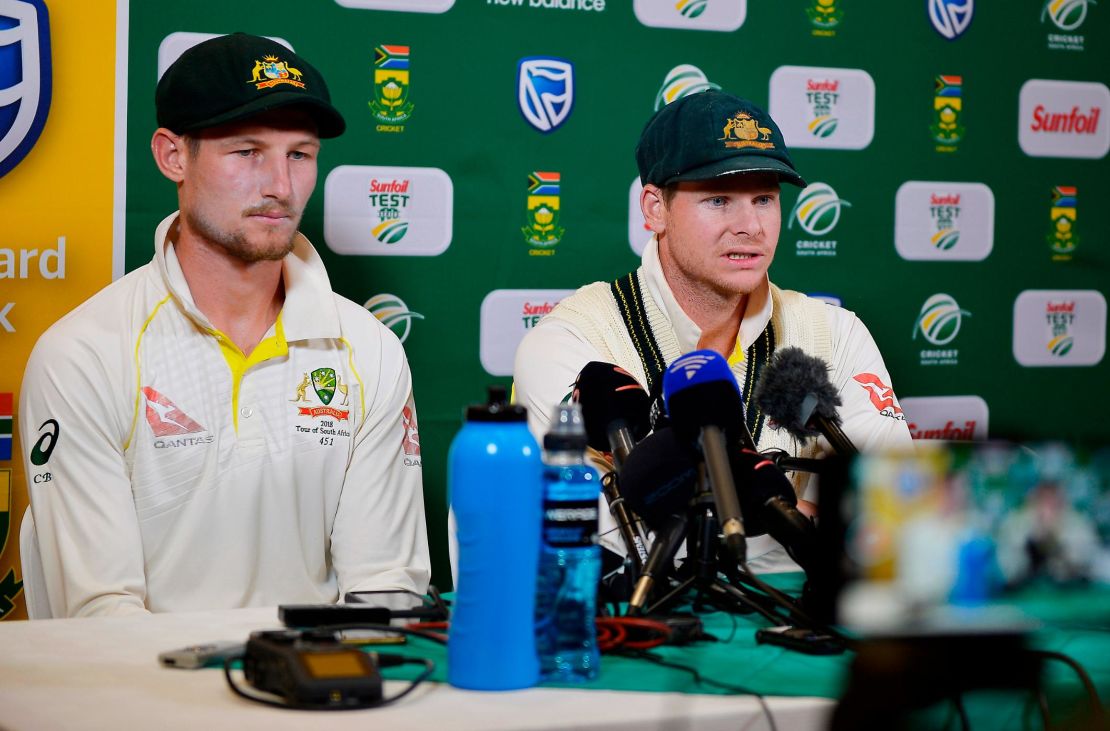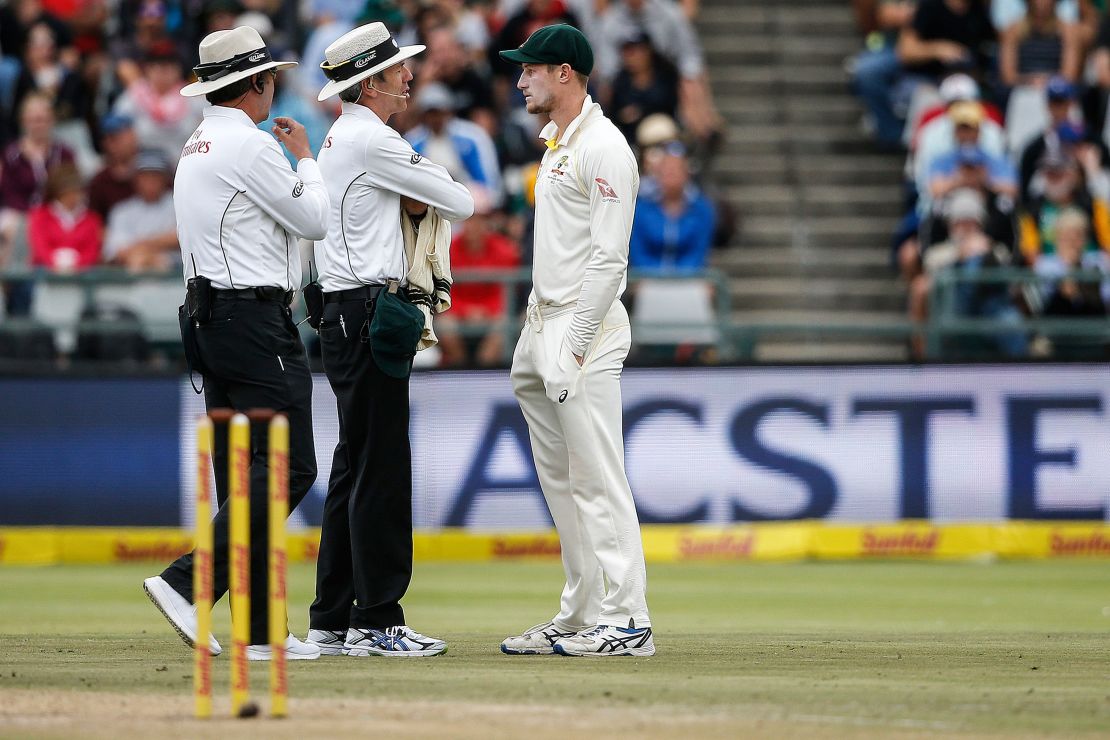Story highlights
Smith, Warner banned for 12 months
Bancroft given nine-month ban
Trio condemned for ball tampering
It is a scandal that has rocked Australian cricket and sparked worldwide condemnation.
The ball-tampering episode involving Steve Smith, David Warner and Cameron Bancroft has left reputations in tatters and angered and disappointed politicians, fans and former players alike.
Smith, who before the weekend was one of his country’s most revered sportsmen, and Warner have both received 12-month bans by Cricket Australia Wednesday for their part in illegal tampering with the ball on day three of the third Test against South Africa.
Bancroft, the fielder who attempted to alter the condition of the ball with sandpaper, was handed a nine-month ban.
Ball tampering is not a new phenomenon in cricket – but why do players tamper with a cricket ball and what are the benefits?
READ: Australian cricketers handed lengthy bans
READ: Cheating scandal harms national psyche
What is ‘swing?’
To understand ball tampering, it is important to understand swing bowling. This is when a bowler gets the ball to veer sideways as it travels through the air towards the batsman.
The more a ball swings in the air, the more problems a batsman faces and, consequently, the more likely the player is to be dismissed.
There are two types of swing – conventional and reverse – and it is all about aerodynamics.
Conventional swing happens when the ball is new and is released from the bowler’s hand with the seam at an angle to the initial line of flight. Its effectiveness is also down to the technique and skill of the bowler.
But as the ball gets older players will try to keep one side as shiny as possible and let the other become rough, changing the aerodynamics of the ball. The rougher they can get the worn side, the better.
With the right technique, the ball will now swing away from the shiny side, which travels faster through the air.
This “reverse swing” was pioneered by former Pakistan international Sarfraz Nawaz in the 1970s but made famous in the ’80s and ‘90s by Pakistan’s Wasim Akram and Waqar Younis. It is a skill few bowlers can master.
The ball tends to swing more severely than conventional swing and moves late in the delivery, making it more difficult for the batsman.
Changing the ball legally and illegally

World cricket’s governing body – the International Cricket Council (ICC) – does allow players to tamper with a ball with a “non-artificial substance,” which usually means rubbing the ball against their trousers or using their saliva to add shine.
A ball can also be roughed up naturally – by bouncing it in from the boundary, for instance – but there is no guarantee of damaging the same side of the ball.
That is why it is tempting for bowlers and fielders to try illegitimate means to scuff the rough side of an old ball to extract more reverse swing.
“I saw an opportunity to potentially use some tape to get some granules from the rough patches on the wicket and try to change the ball condition,” Bancroft said in a news conference. “It didn’t work.”
A Cricket Australia investigation later found he used sandpaper, not tape as he claimed.
Why did Australia attempt this? They were struggling in a Test they went on to lose by 322 runs and were desperately seeking an advantage in the field.
‘It’s cheating, plain and simple’
Sport consultant Chris Harrison told CNN that teams use varying techniques to rough up the ball. Sometimes, he said, players will use suncream to enhance the swing.
“This does not allow it to naturally deteriorate. It’s cheating, plain and simple,” he added.

But ball tampering is almost as old as the game itself and there are plenty of recent examples of players attempting to gain advantage in such a way.
In 1990, New Zealand’s Chris Pringle admitted using a bottle top to scratch the ball during a Test against Pakistan.
Four years later, England captain Michael Atherton took dirt off the pitch, put it in his pocket and was caught on camera using it on the ball.
Atherton was fined $2800 by the England Cricket Board, but it wasn’t until 2000 that a player was fined and suspended by the ICC for the offense.
The bowler in question was Pakistan’s Younis, found guilty of ball tampering in a limited-overs match against South Africa after TV footage showed him apparently using his fingernails to scratch one side of the ball.
Four years later, India’s Rahul Dravid was fined 50% of his match fee after being caught on camera applying lozenge on the ball while playing Zimbabwe.
More recently, in 2016, South Africa’s Faf du Plessis was fined 100% of his match fee and given three demerit points after he was seen sucking on candy, sticking his fingers into his mouth and then using his saliva to shine the ball. He had also been fined in 2013 for ball tampering.




